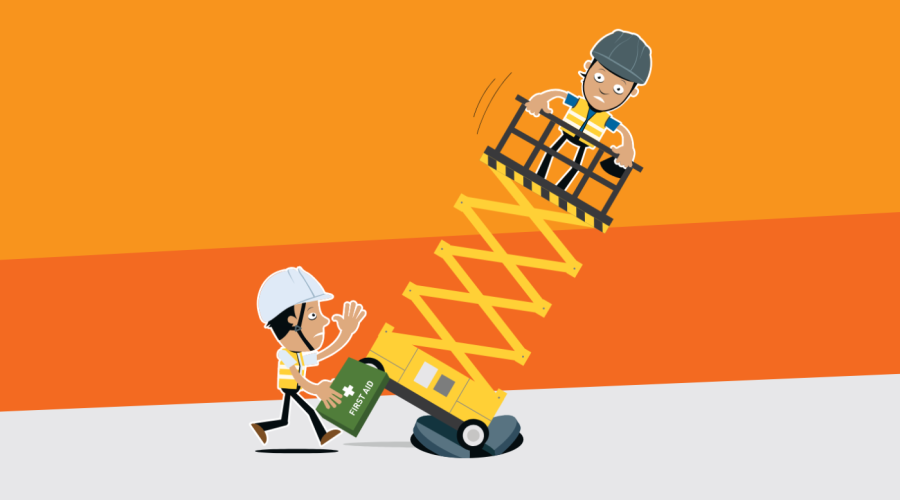Plan Ahead
Resource also available in:
Falls begin on the ground. Plan for the safe use of MEWPs.
Mobile Elevating Work Platforms (MEWPs) are designed to provide safe access for conducting temporary work at height – they are the safest option if the work is planned and managed appropriately. Working at height remains a high-risk activity, however accidents can be prevented by using the appropriate equipment, such as MEWPs; and through proper planning, risk assessment, active supervision of work at height, and by using trained operators, properly familiarised on the equipment they are using.
IPAF’s latest safety campaign highlights the main contributing factors to falls from the MEWP platform and how these can be avoided to ensure all those working with MEWPs plan for safety from the ground before work starts.
1. Operator behavior
Operator behavior when using MEWPs can be a contributing cause of falls from a platform. Common risky behaviors include overreaching or leaning out of the platform, climbing on guardrails, tying gates open or overriding safety controls. To discourage such behaviors, managers must ensure that all operators are properly trained; that the right machine is selected for the job; and working at height is adequately supervised.
2. Exiting at height
To avoid falls from height while using MEWPs, operators should only enter or exit the work platform at access positions at ground level or on the MEWP chassis.
An exception is during a rescue operation, where it may be necessary to exit the platform and descend by other means. This type of rescue should only be conducted where other methods cannot safely evacuate the platform occupants. Prior to use, make sure to have a formal emergency rescue plan that documents the proposed rescue methods, and rank them in a hierarchy with the safest option first.
3. Setting up near other machinery or vehicles
MEWPs are frequently positioned in proximity to moving machinery or alongside vehicular traffic. A collision between a MEWP and a crane, mobile plant machinery or a road vehicle can be catastrophic. Therefore always restrict movement of machinery and/or traffic near the MEWP. Ensure that job site planning and risk assessments are conducted prior to positioning the MEWP. Then implement adequate exclusion zones and a vehicle traffic management plan.
4. Mechanical failure
To avoid accidents through mechanical failure and to ensure MEWPs are maintained in safe working order – which is the owner’s legal obligation – all MEWP owners should implement a rigorous inspection, maintenance and thorough examination regime. The period and scope of the inspections are stipulated by government legislation and by the MEWP manufacturer and is listed in the MEWP operator’s manual.
The inspection schedule includes:
- Pre-use inspection
- Periodic inspections at three or six months
- Annual inspection
All inspections must be conducted by a competent person with adequate training and experience on that type of MEWP.
Management responsibility
It is the manager’s responsibility to ensure that all work at height using a MEWP is planned, supervised and that operators are properly trained. IPAF’s MEWPs for Managers training course covers everything that managers need to know about using MEWPs on site, from planning the job and completing a risk assessment, to selecting the right equipment and promoting safe use of MEWPs in toolbox talk.
